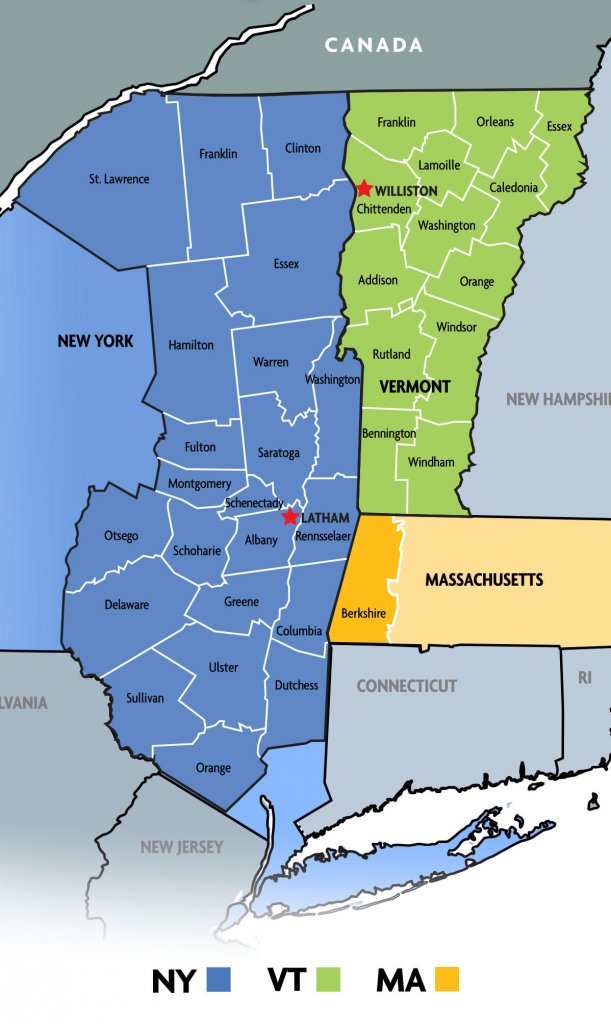Heating and Cooling Terms

AFUE
Annual Fuel Utilization Efficiency (AFUE). Indicated as a percentage, your furnace’s AFUE tells you how much energy is being converted to heat. For example, an AFUE of 90 means that 90% of the fuel is being used to warm your home, while the other 10% escapes as exhaust with the combustion gases.
Advanced Reciprocating Compressor
Type of compressor that uses a more efficient process for compressing refrigerant for better cooling efficiency.
Air Handler
The portion of your air conditioner or heating system that forces air through your home’s ductwork.
BTU
A British Thermal Unit (BTU) is used for both heating and cooling. A BTU is a measure of the heat given off when fuel is combusted. Or for cooling, it’s a measure of heat extracted from your home. One BTU is approximately equal to the heat given off by a wooden kitchen match.
BTU/h
A British Thermal Unit (BTU) is the unit of heat required to raise 1 pound of water by 1 degree Fahrenheit. BTU/h is British Thermal Units per Hour.
CFM
Stands for Cubic Feet per Minute. A measurement of airflow that indicates how many cubic feet of air pass by a stationary point in one minute. The higher the number, the more air is being forced through the system.
Capacity
The ability of a heating or cooling system to heat or cool a given amount of space. For heating, this is usually expressed in BTUs. For cooling, it is usually given in tons.
Carbon Monoxide
A colorless, odorless, highly poisonous gas produced when carbon-based fuels, such as natural gas, burns without sufficient air nearby.
Compressor
Part of a split-system heat pump or air conditioner’s outdoor unit that controls the pressure applied to the refrigerant, necessary for taking in heat to warm your home with a heat pump or getting rid of heat to keep your home cool.
Condenser Coil
Part of the outdoor portion of a split-system air conditioner or heat pump. By converting refrigerant that is in a gas form back to a liquid, the coil sends heat carried by the refrigerant to the outside.
DB
Decibels (dB) are a unit measuring the intensity of noise.
Damper
A type of “valve” used in duct work that opens or closes to control airflow. Used in zoning to control the amount of warm or cool air entering certain areas of your home.
Downflow
A type of furnace that takes cool air from the and blows warm air to the bottom-commonly used where furnaces must be located in a second-floor closet or utility area.
Ductwork
Hollow pipes used to transfer air from the Air Handler to the air vents throughout your home. Ductwork is one of the most important components of a home heating and cooling system.
EER
Energy Efficiency Ratings (EER) measure the efficiency with which a product uses energy to function. It is calculated by dividing a product’s BTU output by its wattage.
ENERGY STAR
ENERGY STAR® is a government-backed program helping businesses and individuals protect the environment through superior energy efficiency. Products with the ENERGY STAR rating will be efficient and save cost on energy bills.
Evaporator Coil
Part of a split-system air conditioner or heat pump located indoors. The evaporator coil cools and dehumidifies the air by converting liquid refrigerant into a gas (or vice-versa). A blower moter, typically in a furnace, then moves air over the coil to either heat or cool your home.
Fan Coil
An indoor component of an air conditioner or heat pump system, used in place of a furnace and evaporator coil, to provide change the refrigerant from a gas to a liquid (or vice-versa) and blow air over the coil to cool or heat your home.
HSPF
The Heating Seasonal Performance Factor is a measure of the heating efficiency of a heat pump. The higher the HSPF number, the more efficiently the heat pump heats your home. (The cooling efficiency of a heat pump is measured by its SEER.)
HVAC
Term used for Heating, Ventilation, and Air Conditioning.
Heat Exchanger
The part of a furnace that transfers heat to nearby air.
Heat Pump
A product that works just like an air conditioner in cooling mode; however, in heating mode, the refrigerant flow is reversed and heat is extrated from the outside air too heat your home.
Horizontal Flow
A type of furnace, installed on its “side”, that draws in air from one side, heats it and sends the warm air out the other side. Most often used for installations in attics or crawl spaces.
Humidifier
A piece of equipment that adds water vapor to heated air as it moves out of the furnace. This adds necessary moisture to protect your furnishings and reduce static electricity.
Hybrid Heat
Hybrid Heat systems deliver exceptional performance by using a heating source that provides the most energy-efficient comfort during moderate heating conditions.
IdealHumidity
IdealHumidity™ is Carrier’s proprietary humidity management innovation for maintaining the ideal comfort in a home.
Indoor Coil
See Evaporator Coil
Inverter
A variable speed compressor that slows down or speeds up to match the heating and cooling load of the space. This also ensures higher comfort.
Load Estimate
A series of studies performed to determine the heating or cooling requirements of your home. An energy load analysis uses information such as the square footage of your home, window or door areas, insulation quality and local climate to determine the heating and cooling capacity needed by your furnace, heat pump or air conditioner. When referring to heating, this is often known as a Heat Loss Analysis, since a home’s heating requirements are determined by the amount of heat lost through the roof, entry ways and walls.
MERV
The Minimum Efficiency Reporting Value is the standard comparison of the efficiency of an air filter. The MERV scale ranges from 1 (least efficient) to 16 (most efficient), and measures a filter’s ability remove particles from 3 to 10 microns in size.
Operating Cost
The day-to-day cost of running your home comfort equipment, based on energy use.
Outdoor Coil
See Condenser Coil
Payback Analysis
Overall measure of the efficiency and value of your home comfort system. By combining your purchase price and ongoing operating costs, a payback analysis determines the number of years required before monthly energy savings offset the purchase price.
Puron Refrigerant
Puron® refrigerant is an environmentally sound refrigerant designed not to harm the earth’s ozone layer. Federal law requires that all manufacturers phase out ozone depleting refrigerants in the next few years. Puron refrigerant is approved by the US Environmental Protection Agency as a replacement from Freon 22*.
R-22 Refrigerant
R-22 is a single component HCFC refrigerant with low ozone depletion potential. It has long been used in a variety of air-conditioning and refrigeration applications in a variety of markets. Per U.S. EPA regulations, new R-22 cannot be used in new systems effective in 2010, although service quantities of the refrigerant may be produced until 2020.
Reciprocating Compressor
A type of compressor used in air conditioners that compresses refrigerant by using a type of “piston” action.
Reclaiming
Returning used refrigerant to the manufacturer for disposal or reuse.
Recycling
Removing, cleaning and reusing refrigerant.
Refrigerant Lines
Two copper lines that connect the Condenser (Outdoor) Coil to the Evaporator (Indoor) Coil.
SEER
The Seasonal Energy Efficiency Ratio is a measure of the cooling efficiency of your air conditioner or heat pump. The higher the SEER number, the more efficient the system is at converting electricity into cooling power.
Scroll Compressor
A specially designed compressor that works in a circular motion vs. an up and down piston action.
Single Package Product
One outdoor unit that contains both a heating and a cooling system.
Split System
Refers to an air conditioner or heat pump that has components in two locations. Usually, one part of the system is located inside (evaporator coil) and the other is located outside your home (condenser coil).
Thermostat
Unit that monitors and controls your HVAC system products.
Thermostatic Expansion Valve
A thermostatic expansion valve (TXV) is precision device used to meter the flow of liquid refrigerant entering the evaporator at a rate that matches the amount of refrigerant being boiled off in the evaporator.
Ton
A unit of measure for cooling capacity. One ton = 12,000 BTUs per hour.
Two-Stage Compressor
Two-Stage Compressors are capable of two levels of operation, a low stage and a high stage. Properly sized equipment will operate 80% of the time in low stage, enhancing efficiency and comfort with lower humidity levels and quieter operation. It’s like getting two air conditioners or heat pumps in one system.
UL
The Underwriters Laboratory Inc. (UL) is a nationally recognized, objective, non-profit organization that tests and rates electrical products for public safety.
Upflow
A type of furnace that draws cool air from the bottom and blows the warmed air out the top into the duct work. This type of furnace is usually installed in a basement or an out-of-the-way closet.
Ventilator
A ventilator captures heating or cooling energy from stale indoor air and transfers it to fresh incoming air.
Zoning
A way to increase your home comfort and energy efficiency by controlling when and where heating and cooling occurs in a home. Programmable thermostats are used to control operating times of the equipment. Dampers are used to direct air flow to certain parts or “zones” of the home.



